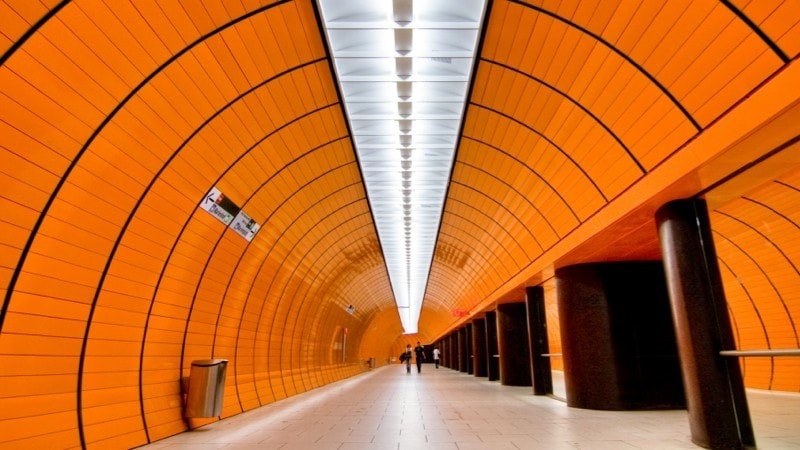
As global governments continue to shape the energy transition, cities are playing a vital role in developing, implementing and overseeing these policies. By 2050, about 70% of the world’s population will live in urban areas, up from 57% today.

Cities, like the entire global economy, now run largely on fossil fuels. Consuming about 78% of the world’s energy, they account for more than 60% of global greenhouse gas emissions, according to the United Nations. Urban transport alone accounts for the equivalent of 4 billion tonnes of CO2 emissions, more than 40% of the transport sector’s total emissions, according to the International Energy Agency.
To a large degree, cities are our future. The way existing and entirely new cities shape their energy infrastructure—the degree to which they can use alternative fuels to power their operations—will have a defining impact on our ability to move beyond fossil fuels over the coming decades. Cities will be the stage on which the transition to net zero is played out.
Cities are already starting to lead. The platforms for greater resilience are at hand, including the development of microgrids and renewable energy systems, the integration of photovoltaic (PV) elements into building design, the systematic rollout of heat pumps, and massive advances in battery storage. What’s needed now is to accelerate a series of holistic shifts. Shifts are needed in the fuels that are used to power these systems (away from coal, oil and natural gas towards renewable electricity and green gases, such as hydrogen); in the technologies that make these systems run; and in the people who can install and manage them. Today, it is vitally important for cities to develop a cohesive and coordinated approach so they can facilitate a cleaner and faster tech-enabled energy transition. Specifically, to invite innovation, they must engage the large ecosystem surrounding energy issues: political leaders and regulators, power generators, transmission and distribution companies, technology start-ups and manufacturers, and consumers.
In this report, we explore how cities of all sizes and needs can create new clean-energy pathways that will mitigate both global climate change impacts and specific climate threats to their own infrastructure. We construct a strategic framework that allows leaders to consider the typology of their city, and thus how they can chart constructive paths forwards. These pathways are modernising regulations, planning for energy resilience and sustainability, investing in research and development, and rethinking public–private partnerships (PPP). Throughout, we highlight examples of innovators that are already beginning to set examples for their peers. By taking concrete actions across the value chain now, cities can continue to be leaders in mitigating and adapting to the climate emergency and can create a better future for all who live in them.

1. Trendspotting
Trends in three key areas are shaping the future of cities when it comes to energy supply and usage: policies and regulations; technology; and generation and distribution.
Policies and regulations. Rapid advancements are taking place in the issuance and modernisation of regulations to secure a more sustainable energy future. The European Union (EU) has launched several directives that focus on energy efficiency for buildings, including the 2010 Energy Performance of Buildings Directive and the 2012 Energy Efficiency Directive. The US Inflation Reduction Act of 2022 provides a host of measures, including significant rebates and tax credits to help consumers purchase energy-efficient home appliances, solar panels and electric vehicles (EVs).
Countries worldwide have adopted new regulations to incentivise the use of EVs. China, for example, has introduced fiscal subsidies for new energy vehicles, and Norway and the United Kingdom will ban the sale of all new internal combustion engine vehicles starting in 2025 and 2030, respectively.
Technology. The efficiency of solar panels and wind power continues to improve, driving costs down and making these alternatives competitive with fossil fuels. Improvements in fuel cell and battery technologies will accelerate the adoption of EVs and solar power. The rollout of 5G and the reduction in costs of enabling technologies such as the internet of things, along with smart metering and the monitoring of urban energy consumption, will drive the expansion of smart energy grids.
Generation and distribution. Cities are focusing on diversifying their sources of energy to ensure enhanced resilience. The European Commission developed the European Green Deal to act as a platform for reducing net greenhouse gas emissions by at least 55% by 2030; one of its key pillars is reducing external energy dependencies.
City story: In the United States, Burlington, Vermont (population 42,000), is at the vanguard of a growing trend. Residents receive all their power via renewable sources, a diverse mix of biomass, hydro, wind and solar. The municipal operations of Adelaide, Australia, have been powered entirely by renewable energy since July 2020. It is one of more than 830 global cities that have set renewable power transition targets. Hydrogen is becoming an increasingly attractive option for many cities, given its efficiency and viability. In 2020 alone, ten countries adopted hydrogen strategies.

2. Leaning into ecosystems
As urban energy decision-makers take stock of new trends, they must also weigh the new challenges and opportunities in supply and demand. Here, the important transition is one from classical value and supply chains to value networks and ecosystems. Integrating renewable energy into urban infrastructure development will be crucial in providing access to affordable, reliable and sustainable energy for every city resident. And it’s not just a matter of contracting with suppliers for the provision of low-carbon electricity. Rather, cities will need to think holistically about energy and how different parts of the supply chain for electricity, heat, transport and infrastructure can become more efficient. And they need to tap into the growing movement towards a circular economy, in which the waste products of one entity can become the feedstock for another. Leaning into these transformations has the potential to yield significant CO2 reductions.
Moving forwards, decentralised renewable energy generation needs to be developed through on-site generation and the integration of innovations such as microgrids, the integration of photovoltaic elements into building design, and fuel cell and battery storage for residential and commercial buildings and districts. Green hydrogen offers great potential if it can be produced at scale with a lower carbon footprint than current transportation energy supplies. Some green hydrogen projects are already operating. In South Korea, a fuel cell power plant in Incheon is the first large-scale (78 megawatt [MW]) hydrogen power plant; it provides electricity to 250,000 households and heat to a further 44,000. In Lower Saxony, Germany, hydrogen trains from the manufacturer Alstom will replace 14 diesel trains.
From a demand point of view, the best and easiest way to drive a low-carbon future is to use energy as efficiently as possible. That can involve helping consumers conserve energy through better home insulation, and incentivising them to walk, cycle or use public transport instead of driving. Here, too, cities are already leading the charge. Paris in June 2022 took the decision to ban motorised transport from the centre of the city.
Developing new infrastructure that supports a low-carbon urban ecosystem is the best way to bridge the gap between the supply of clean energy and the demand for any energy that makes life convenient and maintains the standards of living that people have come to expect from the fossil fuel era—or, even better, raises those standards.

3. A tale of four cities
As cities look to their future, however, they have to consider their capacity, their capability, their resources and the structural elements that may either enable or restrict their ability to act. Not all cities are similarly situated. Geography, wealth and national contexts play important roles. Compare the needs of the ancient coastal city Venice, Italy, with those of the landlocked and planned metropolis of Brasilia, Brazil. Likewise, a city such as Houston, Texas, which is heavily dependent on cars, will have different energy needs than a public transport–centric city such as Copenhagen, Denmark.
That said, it’s possible to broadly cluster cities based on four typologies. These clusters can then provide a framework for how cities might engage the ecosystem to accelerate the low-carbon energy transition (see figure below).
These four types of city models require differing approaches in order to make the low-carbon transition. Depending on where a city sits, its options may be limited.
Given its lack of political power and tendency to rely on the national grid for power, the dependent city will have to focus on energy self-sufficiency and efficiency solutions.
The striving city has the financial ability to fund energy supply projects but lacks the political power needed to influence local energy transformation and transitions. This being the case, it should focus on deploying solutions that contribute to energy self-sufficiency while building cooperation with the private sector in clean-energy projects.
The aspiring city has the political willpower to modernise, but, because of its lack of financial self-sufficiency, will have to focus primarily on solutions that contribute to energy self-sufficiency and optimise energy-efficiency measures.
The self-reliant city is best placed to ensure constant modernisation and address challenges by updating energy regulations, and it will be able to work with the private sector to ensure the financial sustainability of clean-energy projects.
Additional interventions needed by cities based on their typologies are outlined in the report Rethinking City Revenue and Finance developed by the World Economic Forum.

4. Engaging partners
Each of the four city types will need to plot its own political and financial paths to make the low-carbon energy transition. All will need to engage and involve the key players in their energy ecosystem if the transition is going to be a success. The graphic below shows the six main groups of stakeholders in the energy ecosystem. Each group has a role to play, and no city can succeed unless it engages all of them (see figure below).
As seen above, these stakeholders interact in a large, expanding and interdependent ecosystem. Regulators and policymakers create the environment that incentivises financing institutions to make long-term investments, and that promotes cleaner and more resilient energy generation, transmission, and distribution. Energy service providers respond to the long-term targets set by regulators and policymakers, collaborate with R&D institutions to develop innovations and turn to financing institutions for the necessary capital. Financing institutions, in turn, can provide the capital that ensures incentive schemes for clean-energy and energy-efficiency projects pencil out. Multilateral organisations provide convening points for developing the necessary cross-border and cross-industry planning. And by creating demand and responding to incentives for new types of products and services, end users play a crucial role. Helping end users develop a conscious approach to energy consumption through continuous monitoring and the adoption of new products and services will spur all the other participants to make vital investments.
Value is created not simply by one participant selling a product or service to another, but rather by various entities working together.

5. Pathways for fuelling urban futures
To fuel an urban future that is sustainable, reliable and cost-effective, all four types of cities will need to follow four broad pathways, calibrating their adoption according to the level of political autonomy and fiscal independence. In each pathway, they will need to learn to work in broad ecosystems, engaging with and tapping into the expertise and resources of different stakeholders to create value in new ways.
Pathway 1: Modernise regulation
The first step for any city is to conduct a thorough evaluation of national or city-specific net-zero ambitions so that it can consider the role of energy regulations in achieving these goals. The regulatory framework will need to modernise so that it can encourage, align with and keep track of advancing technologies such as EVs and decentralised energy systems. It will need to provide the incentive for the development of clean and resilient sources of energy while also emphasising the importance of energy-savings programmes such as grants for green buildings and energy rebates. Finally, cities need to harness the power of new technologies in the form of big data analytics and machine learning to monitor the impact of clean-energy regulations and refine regulations over time.
City story: Mexico law accelerates solar growth. In 2012, Mexico became one of the first countries to pass a climate change law with legally binding emissions goals. It included provisions to mitigate climate change by reducing carbon dioxide emissions by 30% by 2020, and it has pledged to boost its commitments. In addition, the law stipulates that 35% of the country’s electricity must come from renewable sources by 2024. Solar PV capacity has been growing rapidly. In the spring of 2022, the government of Mexico City (what we’d call a dependent city) announced it would cover the rooftops of the vast Central de Abasto wholesale market with panels, creating an urban solar farm with a generating capacity of 18 MW, the largest such urban farm in the world. The project is funded by a national fund for energy transition.
City story: Singapore combines policy with an ecosystem. Singapore (a self-reliant city) aims to reduce emissions intensity by 36% by 2030 from 2005 levels. It has pulled several important levers, including policy levers, in pursuit of this goal. In 2018, it became the first Southeast Asian country to introduce a carbon tax. Set initially at S$5 per tonne, in 2022, the tax was raised significantly with an aim of rising from S$25 per tonne in 2024–25 to as much as S$80 per tonne by 2030. Such an aggressive move is needed to make clean-energy technologies cost competitive. Additionally, because Singapore’s limited land area hampers its ability to produce clean-energy, the city launched the Sun Cable project. This project aims to connect Singapore via a 4,000-kilometre subsea power line with Australia’s solar resources.
Pathway 2: Plan for energy resilience and sustainability
Cities at all levels of clean-energy maturity must plan now for future sustainable energy resilience. A core part of this strategy will be investing in infrastructure (such as electric vehicle charging stations) that reduces reliance on conventional sources of energy. Planning needs to be agile and cover short-, medium- and long-term infrastructure investment. Cities will have to understand the environmental impact of new, clean-energy plans, factor national-level strategies into city clean-energy planning, and shape infrastructure investment strategies that both can scale and can be flexible enough to accommodate technological breakthroughs (for example, the high rate of EV adoption will likely also provide a viable source of energy that can be leveraged and utilised efficiently).
City story: A green initiative in Dubai. In 2015, the Dubai Electricity and Water Authority launched the EV Green Charger Initiative. It focused on developing 100 EV green charging stations, at which owners could charge electric cars at no cost from September 2017 to December 2021. The number of EVs registered in Dubai (a self-reliant city) soared from 71 on 31 December 2015 to 5,107 on 31 January 2022 (a 71-fold increase). The number of charging stations has expanded to 325, and they have provided more than 8,800 megawatt-hours (MWh) of electricity in that time, helping EV users travel approximately 58 million kilometres in eco-friendly vehicles.
City story: Incheon fuel cell plant. Today, city-based co-generation plants—where both electricity and heat can be produced—are essential to satisfying the electricity and heat demands of cities. Hydrogen has a unique potential for such applications, as compact power plants based on fuel cells, gas turbines or engines can convert such fuels efficiently in co-generation applications. In Incheon, South Korea, a city of 2.3 million people, the world’s largest fuel cell power plant—the 78 MW capacity Shinincheon Bitdream Hydrogen Fuel Cell Power Plant—opened in 2021.
City story: Brescia steel plant. Large factories near cities produce a large amount of emissions, some of them in the form of waste heat. A steel mill about two miles from the city centre in Brescia, Italy, embarked upon a project that would capture the waste and provide vital fuel for the city of 200,000. Waste heat from the steelmaking process is recovered for two purposes. In the winter, steam is fed through heat exchangers into the city’s district heating system, providing enough heat for 2,000 families. In the summer, the heat is harnessed to produce sufficient electricity to meet the needs of 700 families. The project yields a CO2 reduction of 10,000 tonnes annually.
Pathway 3: Invest in R&D
Despite the current economic turmoil and geopolitical uncertainty, cities must continue investing in clean-energy R&D. The significant improvement in solar energy efficiency over the past decade has proved why. This is a clear example of the vital imperative to engage the broader ecosystem. Future R&D focus should include investing in applications of emerging technologies for energy optimisation. Artificial intelligence and machine learning can enhance planning, predictive capabilities and computer vision for monitoring energy use, and blockchain can be deployed for smart contracts and efficient energy trading and management. Cities also should continue to invest in R&D on energy storage. Finally, cities must launch test beds for new energy-saving technologies and ensure clear monitoring of impact and potential scalability.
City story: The Helsinki Energy Challenge. Helsinki—an aspiring city, because it relies on national funding but develops its own plans to reduce energy consumption—has set a bold goal to become carbon-neutral by 2025. Currently, more than half of the city’s emissions originate from heating. To address this imbalance, in the summer of 2021, the city launched the Helsinki Energy Challenge, a 12-month, €1 million crowdsourced challenge, open to start-ups, larger companies, research institutions, universities, individual experts and consortiums. The goal is to come up with solutions to decarbonise the heating of Helsinki using as little biomass as possible.
The city received 252 applications from 35 countries. Ten were shortlisted as finalists, and four teams were selected as winners to further develop their ideas, including a proposal to build reservoirs of hot sea water that would drive heat pumps. One key lesson from the competition was the importance of stakeholder cooperation, as carbon-neutral heating can be achieved through a mix of solutions. The challenge also showed how having international crowdsourced reach can be a model for how cities act as a test bed to future-proof heating solutions.
Pathway 4: Rethink public–private partnerships
Public–private partnerships (PPPs) can be the most valuable instrument in deploying clean-energy projects. But we need new, innovative models that can ensure incentives are provided for energy savings and clean-energy deployment—and thus accelerate the pace of change. For continued success, cities should consider how the terms of contracts can be extended to make them viable for the private sector, and consider new business models for the rollout of unique and disruptive solutions. For example, PPPs could become a standard way to ensure rapid and cost-effective deployment of solutions such as upgrading streetlights.
City story: South Africa’s procurement programme. In line with South Africa’s commitments to reduce carbon emissions by 22.5 million tonnes by 2030, the government launched an initiative focused on incentivising the private sector to invest in renewable energy. The Renewable Energy Independent Power Producer Programme (REIPPP) applies to clean-energy projects such as onshore wind, solar PV, solar thermal, solid biomass, biogas, landfill gas and small hydro plants. Under this programme, a ceiling tariff level is set for each technology in the different bids, and winning bidders sign a 20-year power purchase agreement. To date, it has facilitated the installation of more than 6,000 MW of generation capacity from renewable and clean sources, primarily wind and solar. Many of the projects are intended to serve specific population centres. In August 2021, the Eastern Cape province completed the Wesley-Ciskei wind energy facility, a 34.5 MW wind farm that serves three towns in the region. The developer, EDF Renewables, agreed to sell the output to South African utility Eskom.
City story: A microgrid in Australia. Lakeland, Australia, is an example of a tiny (population 300) striving city. It doesn’t get involved in policy but aims to build its self-sufficiency, and is already producing 40% of its energy from a local solar farm and microgrid. Lakeland, located in the remote northern area of Queensland, has historically faced severe reliability issues, particularly during fires and storms. As part of an initiative by the Australian Renewable Energy Agency to explore how local resilience can be provided to rural cities, a 10.8 MW solar farm was developed alongside a 1.4 MW lithium-ion battery storage facility operated as part of a microgrid to provide local energy resilience. The Lakeland Solar and Storage Project began operations in 2017 and can power 1,000 homes for several hours during a national grid outage. It has also demonstrated how such a facility can be a profitable venture by exporting excess energy to the national grid.

6. Accelerating the transition to sustainable energy in cities
There is a great deal to be done to work effectively in the ecosystems that are forming. Each stakeholder has an important role to play. It starts with self-awareness. Cities must recognise their assets and advantages, as well as their liabilities and challenges. The pathways are clear, and there is significant opportunity for progress for every city—regardless of where it is situated.
As we progress, it is vital to move with a combination of optimism, realism and urgency. Cities are the laboratories for experimentation, implementation, solutions and scaling. Although climate change is truly a global problem, there is not a single global solution, or even a few national solutions. National and international actions matter. But the real efforts and proof points—the markers of success—will appear in the world’s vibrant cities.
City leaders must understand how their cities are situated and what their capabilities are, and begin to act accordingly. The good news is that many of the solutions for improvement are at hand. It is now a question of scaling, deployment, financing and integration. This endeavour will require the good-faith efforts and ingenuity of all players in the ecosystem.






